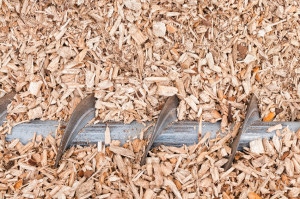Burgeoning Biomass Boilers Demand Next-Gen Design
 The race for more efficient, green energy production has many countries—and companies—exploring options like solar, geothermal, wind, and water power. There’s another contender, however, one that isn’t quite as flashy or news-worthy: Biomass. This technology comes with some significant benefits such as an almost-identical infrastructure profile to that of coal-fired plants. But there are also challenges—as noted by ACHR, biomass boilers often require special handling to ensure they’re operating at peak efficiency.
The race for more efficient, green energy production has many countries—and companies—exploring options like solar, geothermal, wind, and water power. There’s another contender, however, one that isn’t quite as flashy or news-worthy: Biomass. This technology comes with some significant benefits such as an almost-identical infrastructure profile to that of coal-fired plants. But there are also challenges—as noted by ACHR, biomass boilers often require special handling to ensure they’re operating at peak efficiency.
Building Biomass
Coal-fired plants may be on the way out. In the United Kingdom, coal-based facilities will be gone in a decade while in the United States increasingly strict operational requirements have prompted many businesses to consider alternative energy options. According to Greenville Online, biomass is often a go-to choice for several reasons. First is wide availability: Woody biomass is abundant in many states and can be burned on-demand, meaning it easily meets baseload energy requirements of typical energy grids. What’s more, coal plants can often be retrofit to accommodate biomass boilers, meaning companies don’t have to take a total loss when converting away from coal.
Of course, the ideal situation here isn’t a cold-turkey switch but rather a crossover period where both existing boilers and new biomass solutions work side-by-side to offer solid baseline generation and failover capacity as needed. But this is where things get tricky: It’s not always so easy to flip the switch.
Boiling Over
Before moving to large-scale installations, it’s worth taking a look at the fastest-growing biomass sector: Residential and small commercial buildings in rural areas. Many of these buildings rely on Number 2 fuel oil or propane for heat but as these materials become more and more expensive, pellet-fired biomass boilers are quickly becoming a viable option. But as ACHR points out, biomass systems require a uniquely designed and balanced system to achieve maximum output. This includes properly-sized storage tanks specifically designed control systems, circulators, mixing valves, and low-temperature heat emitters. In other words, it’s not as easy as installing a biomass boiler next to an existing oil-fired system and assuming they’ll trade off load automatically as required. Biomass solutions also demand more rigorous and consistent boiler tube cleaning to maintain peak efficiency, making regular maintenance a top priority
The same applies to large-scale systems. While coal plants make the ideal home for new biomass developments, companies can’t simply truck in tons of woody material, start burning and hope for the best. Energy generation will occur, absolutely, but at significantly reduced efficiency. What’s more, improperly designed biomass boilers can release “toxic compounds like dioxins; heavy metals, including lead, arsenic and mercury; and even emerging contaminants”, according to The Partnership for Policy Integrity. The result? Companies looking for alternative energy routes could end up on the same road as coal-fired plants cited for harmful environmental impacts.
Here’s the bottom line: Biomass offers a way to move away from coal without wasting infrastructure. Maintaining efficiency without increasing pollution, however, demands specific boiler design backed by scheduled, expert maintenance.
Next Steps:
- Subscribe to our blog to stay informed about the latest HVAC news and insight.
- Stay up to date on facility maintenance tools such as chiller tube cleaners, boiler tube cleaners, hose/pipe cleaners, descaler systems, industrial vacuums, commercial pressure washers, and drain cleaners.


Burgeoning Biomass Boilers Demand Next-Gen Design | HVAC Steel Structure
[…] The race for more efficient, green energy production has many countries—and companies—exploring options like solar, geothermal, wind, and water power. There’s another contender, however, one that isn’t quite as flashy or news-worthy: Biomass. This technology comes with some significant benefits such as an almost-identical infrastructure profile to that of coal-fired plants. But there are also […] Source link […]